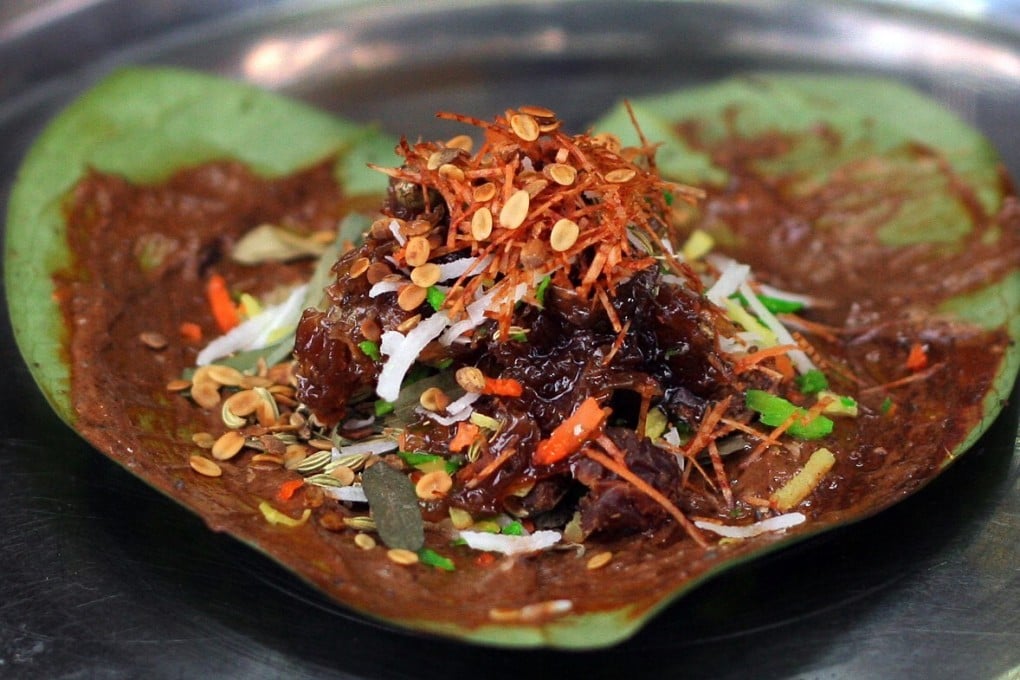The history of paan: an Indian treat made with a betel leaf that’s recommended in the Kama Sutra and praised by Ayurveda practitioners
- Known by different names in various Indian languages, millions of Indians chew paan every day and have done so for thousands of years
- Used as a mouth freshener or a post-meal treat, it is also touted as an aphrodisiac and is praised by Ayurveda practitioners for its health-giving properties

Paan is everywhere in India. The treat – a betel leaf stuffed with a variety of ingredients – can be found in people’s homes, at restaurants, shopping centres and markets.
The kiosk of the street corner paanwallah (seller of paan), where people gather over gossip and gilauri (prepared paan triangles), is like a modern-day coffee shop. Usually a flimsy, colourful structure with a tarpaulin roof, it sports a wooden table and steel containers filled with paan condiments. Sachets of chewing gum and mouth fresheners hang over it like party decorations.
The moment an order is placed, the vendor’s hands start flying over his accoutrements – the heart-shaped, emerald-hued paan (the word refers to both the leaf, and the preparation made with it) is pulled out from under a wet muslin cloth, smeared with slaked lime and the astringent, chocolate-brown herb kattha.

Tambul, tamalapaku, nagavalli, nagarbel, vettile … known by different names in different Indian languages, the herby paan is deeply rooted in the subcontinental culture. Millions of Indians chew paan daily – its piquant and peppery taste make it an excellent mouth freshener or a post-meal treat.
Ancient texts mention how the betel leaf’s different parts represent different Hindu deities: Lakshmi in front, Shiva around the edges, and Yama – the Lord of Death – residing in the stalk, the unfavourable part, to be shunned.